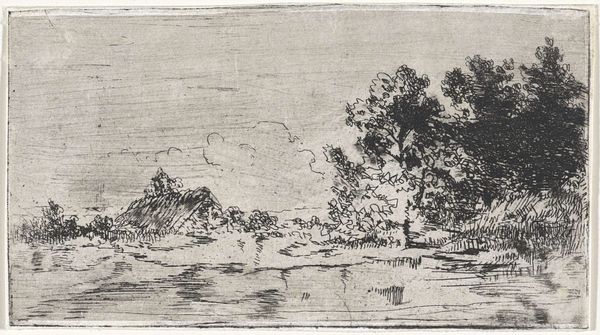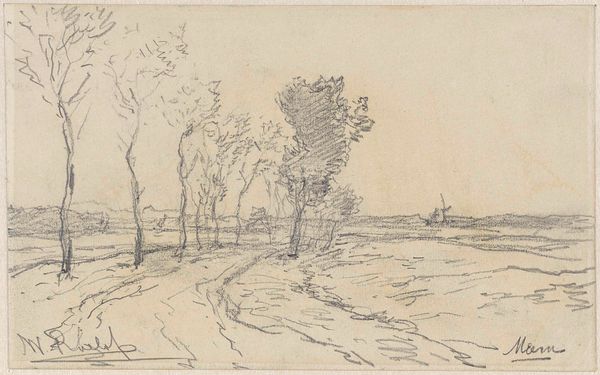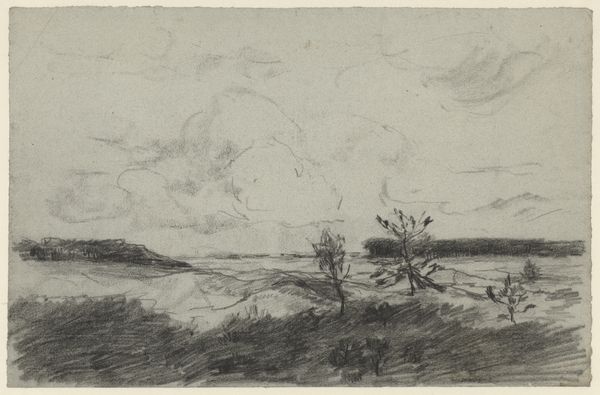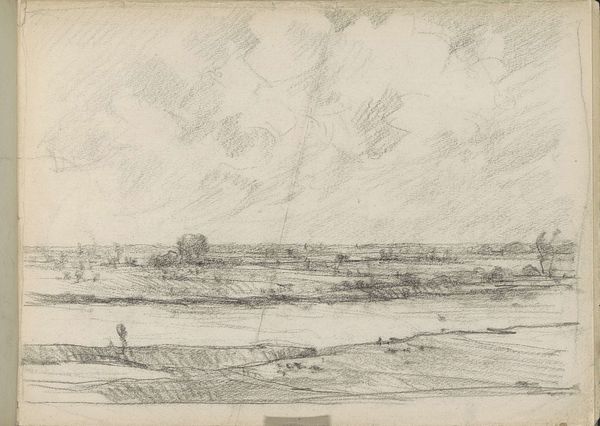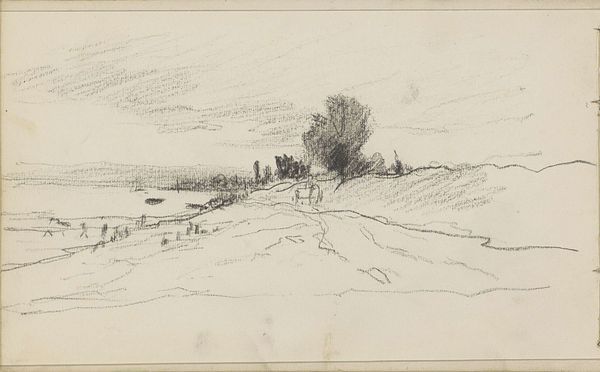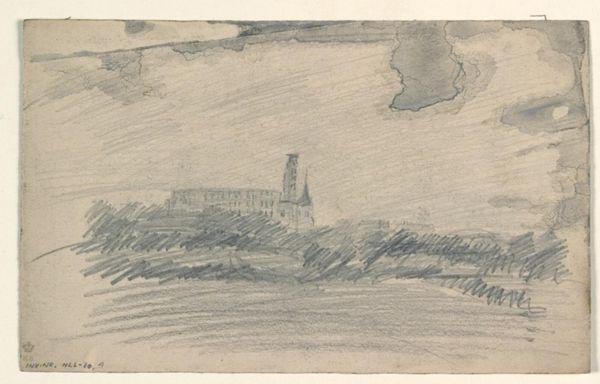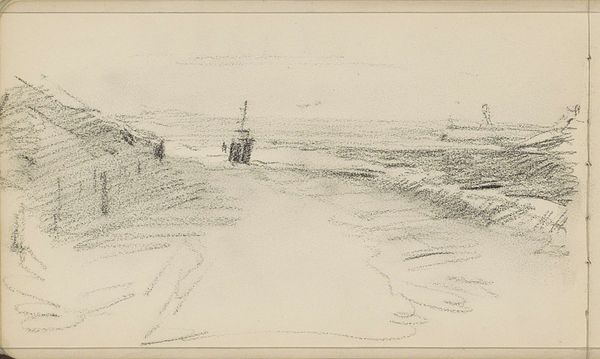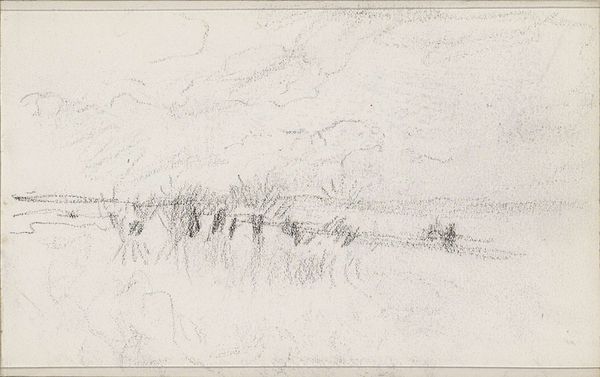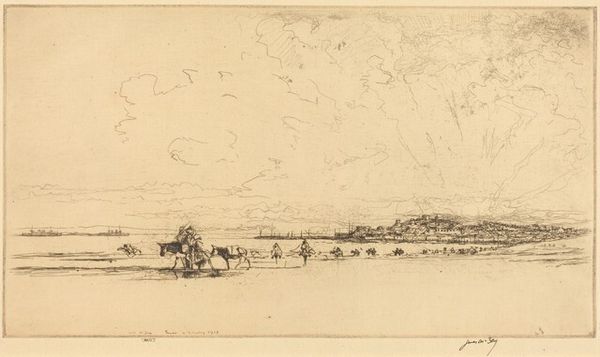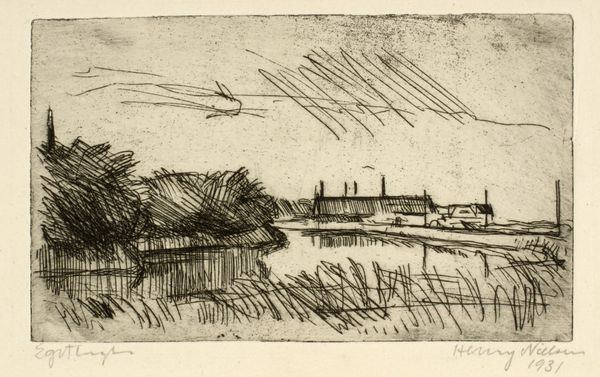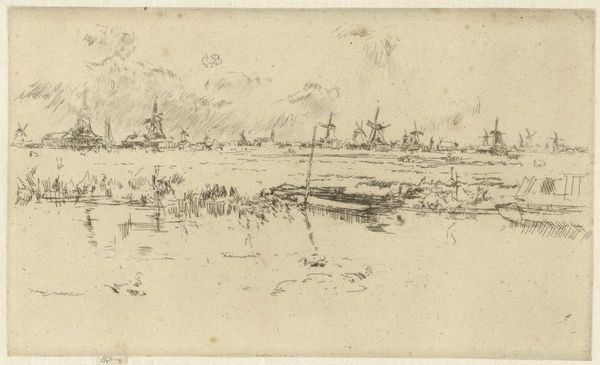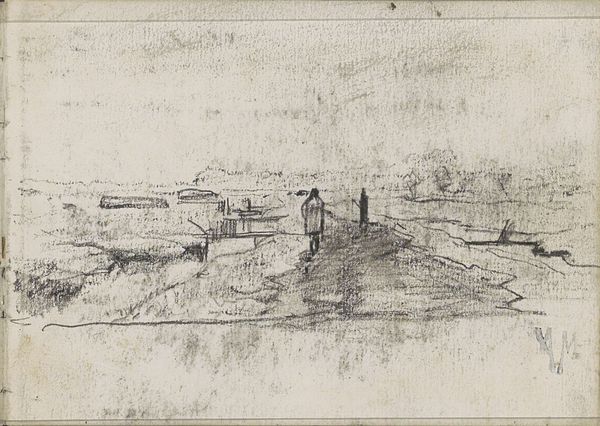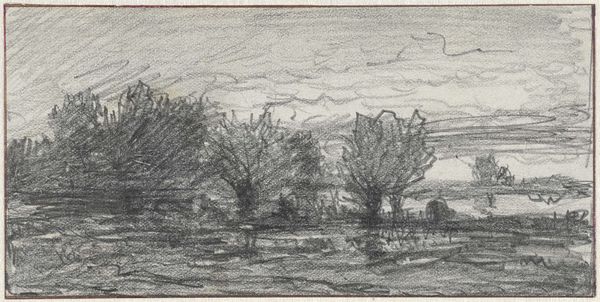
#
light pencil work
#
pen sketch
#
pencil sketch
#
incomplete sketchy
#
personal sketchbook
#
ink drawing experimentation
#
pen-ink sketch
#
sketchbook drawing
#
sketchbook art
#
initial sketch
Dimensions: height 203 mm, width 279 mm
Copyright: Rijks Museum: Open Domain
Editor: This is “Landschap met molen en in de verte een toren,” or “Landscape with Mill and a Tower in the Distance,” a pencil sketch by Egbert Rubertus Derk Schaap, likely created sometime between 1872 and 1939. It feels unfinished, but the looming clouds really capture my attention. What do you see in this piece? Curator: I see a study of power, and perhaps even resistance, encoded within the seemingly simple depiction of a landscape. Look at how the mill and distant tower, symbols of human presence and perhaps even domination over nature, are dwarfed by the immensity and dynamism of the sky. How do you read the artist's choice to emphasize the clouds in such a way? Editor: I hadn't thought of it that way. The clouds are definitely the most active part of the composition; they give the sense of overwhelming, possibly threatening, atmospheric forces. Does that say something about our relationship to the land itself, then? Curator: Precisely. Consider the historical context: the late 19th and early 20th centuries were periods of massive industrial expansion and increasing urbanization in Europe. Schaap’s choice to highlight the untamed power of nature can be interpreted as a commentary on the growing alienation of people from the land and a critique of unchecked progress. Does the roughness of the sketch, its unfinished quality, contribute to this reading, perhaps reflecting a certain unease or incompleteness? Editor: It does. It’s like the artist is capturing a feeling more than a literal scene, the way a person might feel watching the sky during a storm. Now that I think about it, the sketchiness adds to a feeling of the sublime. Curator: Exactly! It challenges us to think about the landscapes we take for granted, what histories they contain and whose perspectives are missing when we see them only as resources or commodities. Editor: That's given me so much to think about, I never would have read this drawing as speaking to these concerns about industrialization and environmental anxiety! Curator: Art allows us to open dialogue about it, to examine critically the powers at play, seen and unseen, in our environment. It asks that we interrogate the present with a sharp look at the past.
Comments
No comments
Be the first to comment and join the conversation on the ultimate creative platform.
